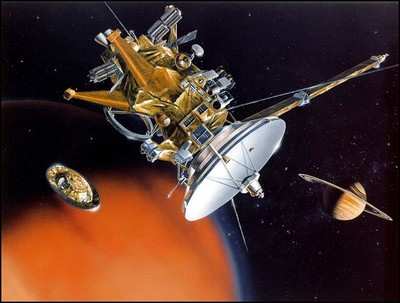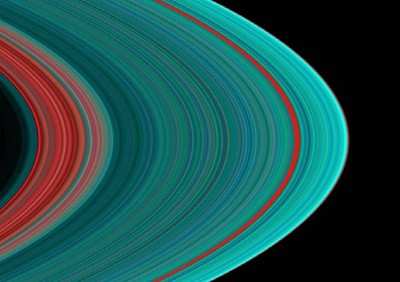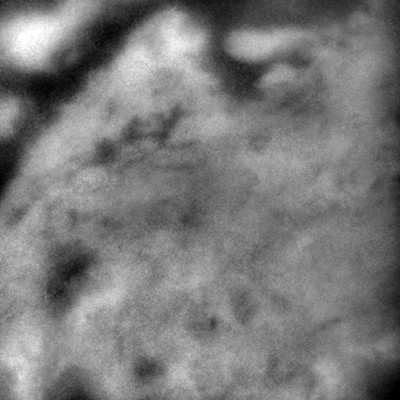Probe's 'Grand Tour Of Saturn' Will Continue
NASA announced Tuesday it will extend the international
Cassini-Huygens mission by two years, giving the historic
spacecraft more time to continue its stunning discoveries and
images that NASA says have revolutionized mankind's knowledge of
Saturn and its moons.

Cassini's mission originally had been scheduled to end in July
2008. The newly-announced two-year extension will include 60
additional orbits of Saturn and more flybys of its exotic moons.
These will include 26 flybys of Titan, seven of Enceladus, and one
each of Dione, Rhea and Helene. The extension also includes studies
of Saturn's rings, its complex magnetosphere, and the planet
itself.
"This extension is not only exciting for the science community,
but for the world to continue to share in unlocking Saturn's
secrets," said Jim Green, director, Planetary Science Division,
NASA Headquarters, Washington. "New discoveries are the hallmarks
of its success, along with the breathtaking images beamed back to
Earth that are simply mesmerizing."
"The spacecraft is performing exceptionally well and the team is
highly motivated, so we're excited at the prospect of another two
years," said Bob Mitchell, Cassini program manager at NASA's Jet
Propulsion Laboratory in Pasadena, CA.
Based on findings from Cassini, scientists think liquid water
may be just beneath the surface of Saturn's moon Enceladus. That's
why the small moon, only one-tenth the size of Titan and
one-seventh the size of Earth's moon, is one of the
highest-priority targets for the extended mission.

Cassini discovered geysers of water-ice jetting from the
Enceladus surface. The geysers, which shoot out at a distance three
times the diameter of Enceladus, feed particles into Saturn's most
expansive ring. In the extended mission, the spacecraft may come as
close as 25 kilometers (15 miles) from the moon's surface.
Cassini's observations of Saturn's largest moon, Titan, have
given scientists a glimpse of what Earth might have been like
before life evolved. They now believe Titan possesses many
parallels to Earth, including lakes, rivers, channels, dunes, rain,
snow, clouds, mountains and possibly volcanoes.
"When we designed the original tour, we really did not know what
we would find, especially at Enceladus and Titan," said Dennis
Matson, the JPL Cassini project scientist. "This extended tour is
responding to these new discoveries and giving us a chance to look
for more."
Unlike Earth, Titan's lakes, rivers and rain are composed of
methane and ethane, and temperatures reach a chilly minus 180
degrees Celsius (minus 290 degrees Fahrenheit). Although Titan's
dense atmosphere limits viewing the surface, Cassini's
high-resolution radar coverage and imaging by the infrared
spectrometer have given scientists a better look.
Other activities for Cassini scientists will include monitoring
seasons on Titan and Saturn, observing unique ring events, such as
the 2009 equinox when the sun will be in the plane of the rings,
and exploring new places within Saturn's magnetosphere.

Cassini has returned a daily stream of data from Saturn's system
for almost four years. Its travel scrapbook includes nearly 140,000
images, and information gathered during 62 revolutions around
Saturn, 43 flybys of Titan and 12 close flybys of the icy
moons.
More than 10 years after launch and almost four years after
entering into orbit around Saturn, Cassini is a healthy and robust
spacecraft. Three of its science instruments have minor ailments,
but the impact on science-gathering is minimal. The spacecraft will
have enough propellant left after the extended mission to
potentially allow a third phase of operations. Data from the
extended mission could lay the groundwork for possible new missions
to Titan and Enceladus.
Cassini launched October 15, 1997 from Cape Canaveral, FL on a
seven-year journey to Saturn, traversing 3.5 billion kilometers
(2.2 billion miles). It is one of the most scientifically capable
spacecraft ever launched, with a record 12 instruments on the
orbiter and six more instruments on the European Space Agency's
Huygens probe, which piggybacked a ride to Titan on Cassini.

Cassini receives electrical power from three radioisotope
thermoelectric generators, which generate electricity from heat
produced by the natural decay of plutonium. The spacecraft was
captured into Saturn orbit in June 2004 and immediately began
returning data to Earth.
 Bolen Gives Congress a Rare Thumbs-Up
Bolen Gives Congress a Rare Thumbs-Up The SportPlane Resource Guide RETURNS!!!!
The SportPlane Resource Guide RETURNS!!!! Buying Sprees Continue: Textron eAviation Takes On Amazilia Aerospace
Buying Sprees Continue: Textron eAviation Takes On Amazilia Aerospace Hawker 4000 Bizjets Gain Nav System, Data Link STC
Hawker 4000 Bizjets Gain Nav System, Data Link STC Echodyne Gets BVLOS Waiver for AiRanger Aircraft
Echodyne Gets BVLOS Waiver for AiRanger Aircraft






